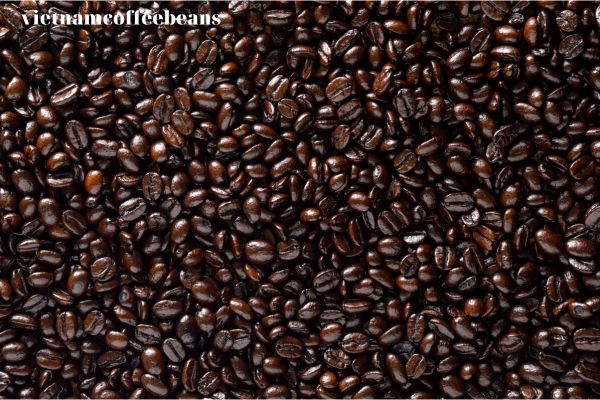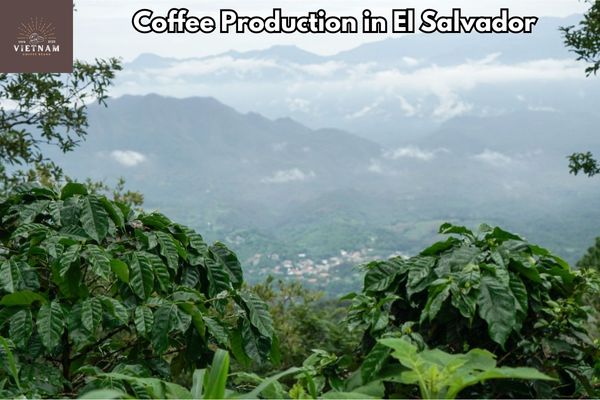I’ve had the pleasure of exploring the diverse and fascinating world of Ethiopian coffee varieties.
Ethiopia, with its rich coffee history, offers a range of selected and bred varieties that contribute to the country’s unique coffee production.
From the regions of Yirgacheffe, Guji, and Sidamo, I’ve discovered exceptional varieties like Kurume, Dega, Wolisho, and two locally selected sub-varieties.
Each variety brings its own distinct flavors and characteristics, showcasing the incredible biodiversity of Ethiopian coffee.
Join me as we delve into the captivating story of these Ethiopian coffee varieties.
Key Takeaways
- Ethiopian coffee varieties are often described as heirloom, highlighting their long history and unique production context.
- The common varieties sourced include Kurume, Dega, Wolisho, and two locally selected sub-varieties from Guji.
- Kurume is a regional landrace variety from Yirgacheffe and was selected as part of a national crop improvement program to combat coffee berry disease and drought.
- Dega is another regional landrace variety that is suited to highland areas and exhibits unique flavor profiles.
The History of Ethiopian Coffee Varieties

I find it fascinating that Ethiopian coffee varieties have such a rich history. Landrace varieties like Kurume, Dega, and Wolisho are named after indigenous trees in the region.
The history of coffee cultivation in Ethiopia dates back centuries. The country is considered the birthplace of coffee.
Coffee holds immense cultural significance in Ethiopian society. It is deeply intertwined with social and economic aspects of life. It is not just a beverage, but a symbol of hospitality, community, and tradition.
Ethiopian coffee varieties have evolved over time, adapting to the diverse agroecological conditions of the different regions. Each variety has its own unique characteristics, flavors, and growing requirements.
The cultural significance of Ethiopian coffee is evident in the rituals and ceremonies surrounding its preparation and consumption. It is an integral part of Ethiopian identity and heritage.
Selected and Bred Ethiopian Coffee Varieties

Ally Coffee sources selected and bred varieties from regions like Yirgacheffe, Guji, and Sidamo in Ethiopia. These coffee varieties have been carefully chosen for their unique characteristics and their ability to withstand the challenges posed by climate change.
The development of resistant coffee varieties has become crucial in ensuring the sustainability of Ethiopian coffee production. Climate change has had a significant impact on Ethiopian coffee varieties, with rising temperatures and changing rainfall patterns affecting their growth and quality.
As a result, coffee growers and breeders have been working tirelessly to develop varieties that are more resilient to these changing conditions. By sourcing these selected and bred varieties, Ally Coffee is supporting the efforts to adapt and preserve the rich coffee heritage of Ethiopia in the face of climate change.
Coffee Varieties From Yirgacheffe

Sourcing from Yirgacheffe, I have discovered unique and diverse coffee flavors. Yirgacheffe is known for its exceptional coffee varieties, each offering its own distinct taste profile.
One of the varieties found here is the Kurume, a regional landrace variety that was selected to combat coffee berry disease and drought.
Another variety is the Dega, named after an indigenous tree that emits a sweet aroma when burned, similar to coffee roasting.
The Wolisho variety, named after an indigenous tree in the Gedeo region, contributes to the rich coffee biodiversity in Ethiopia.
Additionally, Yirgacheffe is home to two locally selected sub-varieties, 74110 and 74112, which were bred for resistance to coffee berry disease.
These varieties in Yirgacheffe offer truly unique flavors that are a testament to the rich coffee heritage of Ethiopia.
Kurume: A Regional Landrace Variety
Kurume, a regional landrace variety, was selected as part of a national crop improvement program to combat coffee berry disease and drought. This variety is commonly grown in the Guji and Gedeo Zones, including Yirgacheffe.
Its name is borrowed from the indigenous trees in the region. Kurume cultivation techniques have been developed over time to maximize its potential. Farmers in the region have honed their skills to cultivate this variety and achieve the best results.
Kurume has its own unique flavor profiles, which are highly sought after by coffee enthusiasts. It offers a delicate and floral taste, with hints of citrus and tea-like notes. The flavor profile of Kurume is a result of its specific growing conditions and the careful processing methods used by farmers.
Overall, Kurume is a prized Ethiopian coffee variety known for its distinct flavors and the expertise required for its cultivation.
| Kurume Cultivation Techniques | Kurume Flavor Profiles |
|---|---|
| Specific growing conditions | Delicate and floral |
| Careful processing methods | Citrus and tea-like notes |
Dega: Another Regional Landrace Variety
I find it fascinating that Dega, another regional landrace variety, is named after an indigenous tree that emits a sweet, fragrant aroma when burned, reminiscent of coffee roasting. The wood of the Dega tree releases a scent that perfectly aligns with the flavors and aromas of Dega coffee.
This variety is well-suited to the cool highland areas of Ethiopia, where it thrives in the agroecological conditions that define its unique growing conditions. Dega coffee exhibits a flavor profile that sets it apart from other Ethiopian varieties. It is known for its bright acidity, floral notes, and delicate sweetness.
The highland environment, combined with the careful cultivation and processing techniques employed by Ethiopian farmers, contribute to the distinctive character of Dega coffee. It is truly a treasure of the Ethiopian coffee landscape.
Wolisho: A Regional Landrace Variety
Cultivated by farmers in the region, Wolisho is a regional landrace variety named after an indigenous tree found in Gedeo and the surrounding area. When it comes to Wolisho coffee farming, there are a few key characteristics that make this variety stand out. Here are some details that paint a picture of what Wolisho coffee cherries are like:
- Large fruit with inconsistent yearly yields
- Large coffee cherries
- Long leaves
- Contributes to the rich coffee biodiversity in Ethiopia
Wolisho coffee cherries have a unique flavor profile that sets them apart from other varieties. They offer a distinct taste experience that combines fruity, floral, and sometimes even spicy notes. As a coffee enthusiast, I’ve had the pleasure of enjoying the rich and complex flavors that Wolisho coffee cherries bring to the cup. It’s truly a testament to the diversity and quality of Ethiopian coffee.
Locally Selected Sub-Varieties: 74110 and 74112
In my experience, one of the most important aspects of Ethiopian coffee varieties is their resistance to coffee berry disease. This disease can have a devastating impact on coffee crops, leading to reduced yields and lower quality beans.
That’s why the locally selected sub-varieties, 74110 and 74112, are so significant. These sub-varieties were specifically bred at the Jimma Agricultural Research Center (JARC) in the 1970s to combat coffee berry disease. They have proven to be resilient and have helped farmers in the region overcome this challenge.
To give you a better understanding, here is a table showcasing the key characteristics of these locally selected sub-varieties:
| Sub-Variety | Resistance to Coffee Berry Disease | Characteristics |
|---|---|---|
| 74110 | High | Compact trees, small leaves, cherries, and beans |
| 74112 | High | Compact trees, small leaves, cherries, and beans |
These sub-varieties have played a crucial role in maintaining the health and productivity of coffee crops in Ethiopia. They exemplify the importance of locally selected varieties in addressing specific challenges and ensuring the sustainability of the coffee industry.
The Development of Locally Selected Sub-Varieties
The development of the locally selected sub-varieties at the Jimma Agricultural Research Center was a significant milestone in combating coffee berry disease. These sub-varieties, 74110 and 74112, were specifically bred for their resistance to this devastating disease.
This development marked a crucial breakthrough in coffee breeding, as disease resistance is of utmost importance in ensuring the sustainability and productivity of coffee crops.
The researchers at the Jimma Agricultural Research Center understood the urgent need to address the threat posed by coffee berry disease. By focusing on developing sub-varieties that possess inherent resistance, they aimed to provide farmers with a solution to protect their coffee plants and livelihoods.
The process of developing these sub-varieties involved careful selection and crossbreeding of different coffee plants. The researchers meticulously evaluated the resulting plants for their disease resistance, growth characteristics, and cup quality.
Through this rigorous selection process, they were able to identify and release the 74110 and 74112 sub-varieties, which exhibited remarkable resistance to coffee berry disease.
The significance of disease resistance in coffee breeding cannot be overstated. Coffee berry disease can cause devastating yield losses and even lead to the complete destruction of coffee plants. By developing sub-varieties with inherent resistance, farmers can reduce their reliance on chemical pesticides and protect their crops from this destructive disease.
Characteristics of Variety 74110
I was fascinated to learn about the characteristics of variety 74110, one of the locally selected sub-varieties developed at the Jimma Agricultural Research Center. This variety, known for its resistance to disease, is cultivated in the Oromia region of Ethiopia.
Here are some key features that make variety 74110 unique:
Compact trees: The trees of variety 74110 are small and compact, which makes them suitable for cultivation in limited spaces.
Small leaves: The leaves of variety 74110 are smaller compared to other coffee varieties, giving the trees a distinct appearance.
Small cherries and beans: The cherries and beans produced by variety 74110 are smaller in size. This characteristic is important for efficient harvesting and processing.
These characteristics, combined with its resistance to disease, make variety 74110 a valuable asset for coffee farmers in the Oromia region. It not only ensures a higher yield but also contributes to the overall sustainability of coffee cultivation in Ethiopia.
Characteristics of Variety 74112
Developed at the Jimma Agricultural Research Center, variety 74112 is known for its unique characteristics, including compact trees, small leaves, cherries, and beans. This variety thrives under specific growing conditions.
Variety 74112 requires a highland environment with cool temperatures and well-drained soil. It prefers altitudes between 1,800 and 2,200 meters above sea level. The trees should be planted in areas with adequate rainfall, ranging from 1,200 to 1,800 millimeters per year.
Additionally, variety 74112 benefits from shade provided by other trees or structures. This helps protect the cherries from direct sunlight and extreme weather conditions.
With proper care and maintenance, this variety can produce high-quality coffee with distinct flavors and aromas. Farmers who cultivate variety 74112 should ensure they provide the necessary growing conditions to maximize its potential.
Frequently Asked Questions
Conclusion
In conclusion, Ethiopian coffee varieties are a testament to the rich history and unique production context of coffee in this region.
The selected and bred varieties, such as Kurume, Dega, and Wolisho, showcase the diverse flavors and characteristics that make Ethiopian coffee so special.
Additionally, the development of locally selected sub-varieties, like 74110 and 74112, highlights the ongoing efforts to improve disease resistance and enhance the quality of Ethiopian coffee.
As an experienced coffee enthusiast, I appreciate the intricate flavors and complexities that these Ethiopian coffee varieties bring to my cup.





